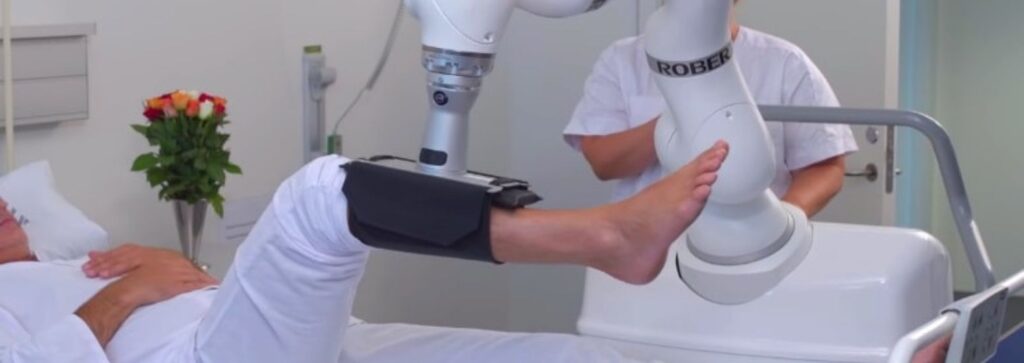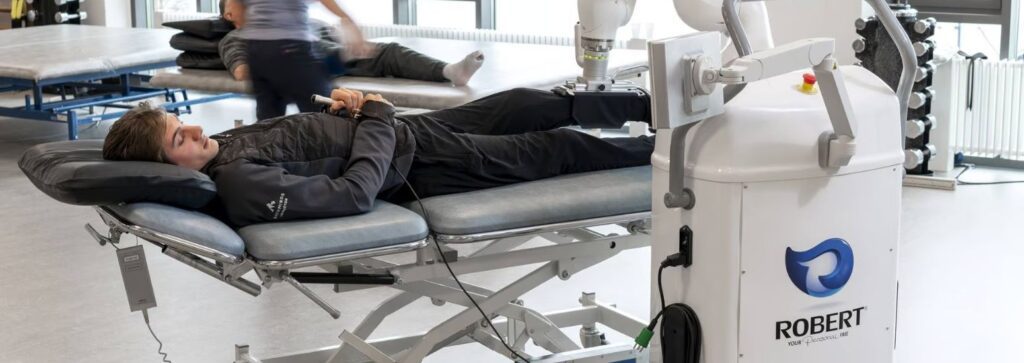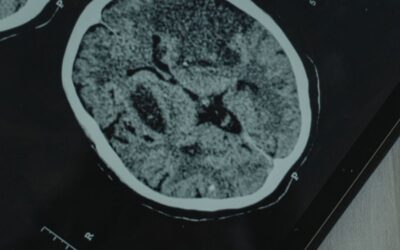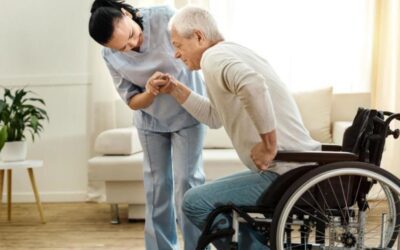ROBERT® has the capacity to demonstrate its distinctive capabilities in addressing lower limb issues and an additional component for treating upper limb conditions.
Life Science Robotics has created ROBERT®, an innovative robot engineered to assist in the movement of immobilised patients and to aid experts in the field of rehabilitation robotics.
Rehabilitation robots in patients
ROBERT® is developed to facilitate the early mobilisation of patients who are bedridden. This highly innovative and revolutionary robot, ROBERT®, prioritises effective rehabilitation and early mobilisation of patients.
How to Use the Robot
ROBERT® is straightforward to set up and operate.
- ROBERT® makes it easy to move the robot from one place to another, providing healthcare professionals with quick, safe, and intuitive operation.
- It reduces the need for heavy and repetitive lifting and improves early mobilisation, thus enhancing the effectiveness of treatment.
- It leads to quicker recovery and a faster return to daily activities.
- It also results in shorter hospital stays.
Life Science Robotics

Robotics is becoming more and more important in life sciences applications. Life Science Robotics is currently concentrating on developing new software features. The most recent enhancement introduced audio cues to simplify the training process.
Initiating movement promptly after being admitted to the hospital or undergoing surgery is a crucial factor for achieving the best possible recovery… There are three specific procedures…
Active Resistive Mobilisation
ROBERT® provides resistance to the patient’s movements. The level of resistance during the exercise is tailored to the patient’s functional strength. Healthcare professionals can programme ROBERT® to provide resistance for any movement.
Active Assistive Mobilisation
ROBERT® leads the patient through the exercise, with the level of activity during the exercise determined by the patient’s function and strength. The patient follows ROBERT®’s movements or rests if fatigued.
Passive Mobilization
ROBERT® aids in the recovery of patients who are immobilised, making it easier to mobilise severely affected patients at an early stage. Patients with limited or no function can participate in rehabilitation early on.
Recovery by ROBERT
ROBERT®’s- rehab robot, mobilises patients…
It is crucial to initiate rehabilitation exercises promptly to help patients leave their beds quickly.
Following surgery or a stroke, robot-assisted therapy is frequently advantageous for moving the patient’s joints and muscles intensely for a prolonged period to aid in the healing process. Failure to carry out this mobilisation may lead to potential complications, such as limited mobility in the future.

Testimonial by our patients-
Managing plantar flexion is challenging in a traditional setting due to the patient’s tendency to compensate. ROBERT® facilitates precise movement and can regulate the exercise’s range of motion. This feature sets ROBERT® apart and presents a unique opportunity. This is an exclusive aspect of ROBERT®! Neuro physiotherapist,
Neuro Life Science Robotics
Powered exoskeletons equipped with robotic suits have recently been unveiled to aid in the recovery of individuals with spinal cord injuries. These exoskeletons provide a special chance for those with SCI to engage in standing and walking.
Life Science Robotics has created a healthcare solution for assisting with stroke rehabilitation through robot-assisted therapy and for aiding in the mobility of patients.
For a demo, log onto https://rehabmodalities.com/
Use this opportunity to learn more about what this innovative ‘ROBERT®’ has to offer patients.



